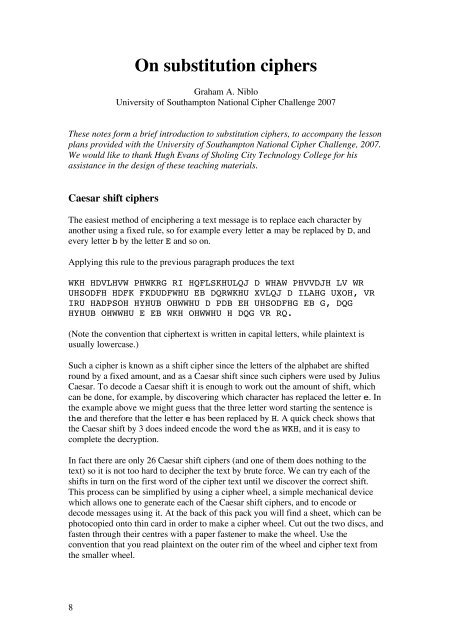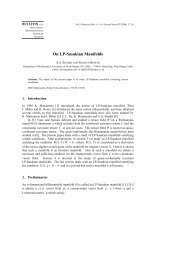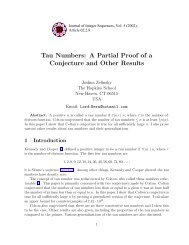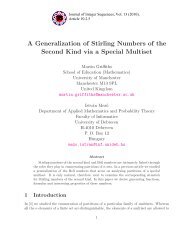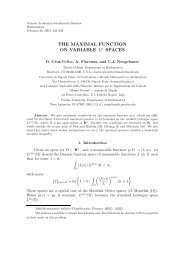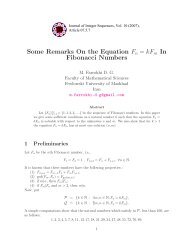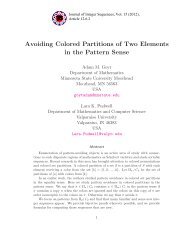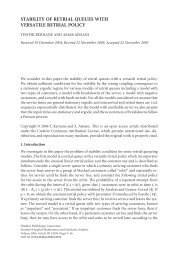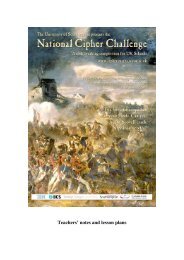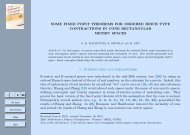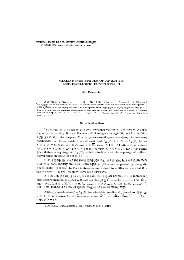Teachers - University of Southampton
Teachers - University of Southampton
Teachers - University of Southampton
You also want an ePaper? Increase the reach of your titles
YUMPU automatically turns print PDFs into web optimized ePapers that Google loves.
On substitution ciphers<br />
Graham A. Niblo<br />
<strong>University</strong> <strong>of</strong> <strong>Southampton</strong> National Cipher Challenge 2007<br />
These notes form a brief introduction to substitution ciphers, to accompany the lesson<br />
plans provided with the <strong>University</strong> <strong>of</strong> <strong>Southampton</strong> National Cipher Challenge, 2007.<br />
We would like to thank Hugh Evans <strong>of</strong> Sholing City Technology College for his<br />
assistance in the design <strong>of</strong> these teaching materials.<br />
Caesar shift ciphers<br />
The easiest method <strong>of</strong> enciphering a text message is to replace each character by<br />
another using a fixed rule, so for example every letter a may be replaced by D, and<br />
every letter b by the letter E and so on.<br />
Applying this rule to the previous paragraph produces the text<br />
WKH HDVLHVW PHWKRG RI HQFLSKHULQJ D WHAW PHVVDJH LV WR<br />
UHSODFH HDFK FKDUDFWHU EB DQRWKHU XVLQJ D ILAHG UXOH, VR<br />
IRU HADPSOH HYHUB OHWWHU D PDB EH UHSODFHG EB G, DQG<br />
HYHUB OHWWHU E EB WKH OHWWHU H DQG VR RQ.<br />
(Note the convention that ciphertext is written in capital letters, while plaintext is<br />
usually lowercase.)<br />
Such a cipher is known as a shift cipher since the letters <strong>of</strong> the alphabet are shifted<br />
round by a fixed amount, and as a Caesar shift since such ciphers were used by Julius<br />
Caesar. To decode a Caesar shift it is enough to work out the amount <strong>of</strong> shift, which<br />
can be done, for example, by discovering which character has replaced the letter e. In<br />
the example above we might guess that the three letter word starting the sentence is<br />
the and therefore that the letter e has been replaced by H. A quick check shows that<br />
the Caesar shift by 3 does indeed encode the word the as WKH, and it is easy to<br />
complete the decryption.<br />
In fact there are only 26 Caesar shift ciphers (and one <strong>of</strong> them does nothing to the<br />
text) so it is not too hard to decipher the text by brute force. We can try each <strong>of</strong> the<br />
shifts in turn on the first word <strong>of</strong> the cipher text until we discover the correct shift.<br />
This process can be simplified by using a cipher wheel, a simple mechanical device<br />
which allows one to generate each <strong>of</strong> the Caesar shift ciphers, and to encode or<br />
decode messages using it. At the back <strong>of</strong> this pack you will find a sheet, which can be<br />
photocopied onto thin card in order to make a cipher wheel. Cut out the two discs, and<br />
fasten through their centres with a paper fastener to make the wheel. Use the<br />
convention that you read plaintext on the outer rim <strong>of</strong> the wheel and cipher text from<br />
the smaller wheel.<br />
8


